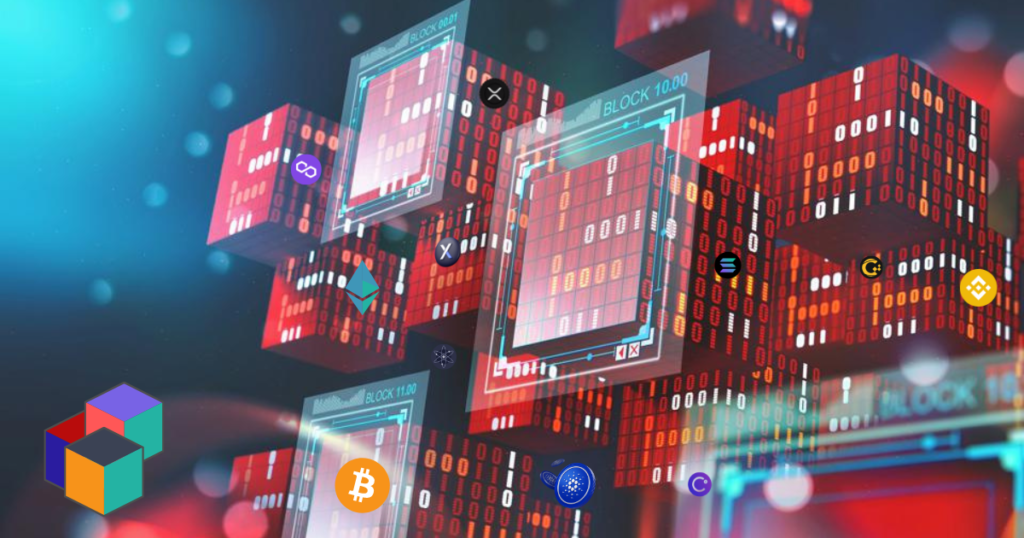What is polka dot? A protocol called Polka dot connects blockchains, enabling the transfer of value and data between previously incompatible networks e.g Bitcoin and Ethereum. It is also intended to be quick and flexible. The Polkadot DOT token, which can be purchased or sold on Coinbase and other exchanges, is used for governance and staking
Like most cryptocurrencies Polka dot has been taking a beating during the bear market, Behind the scenes, however, its ecosystem has only continued to expand as new para chains plug in. So today I’m going to give you explain the Polka dot and will give you a bit of background on polka dot to bring you up to speed with some of the project’s most important updates.
Polkadot Explained
Gavin Wood, a co-founder of Ethereum, founded Polkadot in 2016. Parity Technologies, a software company with headquarters in London, England, created it. The Swiss-based non-profit web 3 foundation manages the development of Polkadot. Around 145 million dollars were raised by Polkadot in 2017, and an additional 100 million dollars were raised in 2019 and 2020. The purpose of the second round of sales was to make up for the $100,000,000 lost when the project’s Ethereum wallets were stolen soon after the first round of sales.
Since then, many polka dot projects have raised tens of millions of dollars, but initially, Polka dot had about 130 million dollars in funding. There is no post-ICO funding for Polkadot itself. Although fully operational, Polkadot’s main net launched in the summer of 2020, and the project is still technically in development. Under the hood, Polka dot uses the relay chain, a proof-of-stake blockchain, which makes use of a cutting-edge consensus technique called nominated proof of stake, which is similar to the delegated proof of stake but superior.
Currently, more than 27,000 nominators are delegators in cryptography, and about 300 validators are entrusted with guarding the Polka Dots Relay Chain, which can process about 1000 transactions per second. It should be noted that up to 1,000 validators can be supported by the polka dots relay chain in its current state. While running a polka dot validator only requires a small amount of hardware, validators must currently stake a minimum of 1.8 million dots to become part of the validator set according to the polka dot app’s website, that’s over 14 million dollars at the time of writing. The minimum stake for nominees is currently 128 dots, which, at the time of writing, amounts to a much more modest $1,000 or so, according to the polka dot apps website.
Note that the minimum stake required to become a validator or nominator can and often does change. Additionally, validators and nominators are required to lock their dot coins for a period of 28 days, and any bad validators are slashed. According to staking rewards, validators and nominators will receive compensation for their security services in the range of 15% and 14% annually, respectively.
Currently, Polkadot has limited smart contract functionality due to its relay chain, despite being a cryptocurrency with smart contracts. Since it only handles staking, governance, and standard dot transfer transactions. The majority of the smart contract functionality in Polkadot comes from private blockchains called para chains that connect to the relay chain of Polkadot for security. It should be noted that para chains are not required to use dot for transaction fees and are not even required to operate with coins or tokens.
Now there are three types of para chains common good para chains, para threads, and standard para chains. Every type of para chain has a different function and selection process because the relay chain can only support 100 para chains. The community governs the choice of common good para chains, which are used as connections to other cryptocurrencies.

Pay-as-you-go para chains called “para threads” are ostensibly designed for institutions. The para thread is awarded to whoever pays the highest price, and multiple institutions may use the same para thread.
Standard para chains are made for crypto projects, and they are chosen through para chain slot auctions, which entail taking a snapshot of the project’s dot at a random moment just before the auction ends. This aims to stop the crazy last-minute bidding you see on auction websites like eBay. To increase their chances of winning a para chain slot, the majority of crypto projects will hold a para chain loan offering (PLO), which allows their community to delegate dot to the crypto project’s para chain slot auction. Participants in PLO typically receive the coin or token for that crypto project in exchange. This makes Plos like initial coin offerings or Icos but what makes PLos better is that the dots you use to participate in them never actually goes to the crypto project nor is your dot ever sold. Your dot is merely imprisoned on its para chain for the duration of its lease, which is typically no longer than two years.
A total of 24 para chain slot auctions have reportedly taken place thus far, and they were open until the end of August, according to para chains information.
Polkadot Updates
Early in March, Gavin Wood made a controversial donation to the Ukrainian government in the amount of nearly 6 million dots. Gavin Wood had previously implied that the donation had to be made in dot, for what it’s worth the Ukrainians on the other end weren’t upset and that’s what matters. In mid-march popular NFT, crypto project engine launched its para chain on Polka dot bringing its massive community of more than half a million people into Polkadot’s ecosystem. Additionally, Parity Technologies revealed that it had successfully upgraded inc, its proprietary programming language for smart contracts, making it simpler for developers to build on Polkadot.
Katie Hound, a former business partner of Andreessen Horowitz, also invested $10 million in a defy protocol on Moonbeam, a popular Polkadot para chain that uses the Ethereum virtual machine for smart contracts. This is more significant than you think because Katie’s new VC firm secured 1.5 billion dollars in funding earlier this year. In the future, more of that enormous cash hoard may be directed toward other polka dot projects because Katie appears to be interested in the ecosystem.
Akala, a well-known Polkadot para chain, announced a $250 million developer fund at the end of March. This fund is intended to encourage the adoption of AUSD, Akala’s crypto-backed stablecoin, which it hopes will become the norm in the polka dot ecosystem. The adoption of the AUSD would logically translate to an increase in demand for dot, so this is once more significant than you might realize. Different types of dots are the primary asset used to collateralize the AUSD.
Wisdomtree also introduced exchange-traded products for polka dot Solana and Cardano on European stock exchanges to show the level of institutional demand for dot and other altcoins.
the institutional interest in other alternative currencies and the dot was underscored when the Chicago mercantile exchange CME announced that it had added reference rates for a dozen altcoins including polka dot. It should be remembered that the CME is a futures exchange that caters to institutional investors in order to put things into perspective. It is therefore possible that futures for those cryptocurrencies could be on the exchange’s short-term (pun intended) agenda in light of the addition of reference rates for altcoins by the CME.
In mid-April tethers, USDT stablecoin expanded to Kusama Polkadot’s Testnet cryptocurrency. It’s the first centralized stablecoin to establish itself in the Polkadot ecosystem if I’m not mistaken, and it’s anticipated that USDT will eventually join the polka dot. Terra Classic’s now-famous anchor protocol also stated that it would be expanding to a Carla, even though, if I’m not mistaken, it was unable to do so before Terror Classic collapsed.

Since terra classic exposure hurt cryptocurrency projects the most when they crashed, this is actually very good news. It sounds like Akala and Polkadot were on the verge of becoming part of the mess.
The parity signer mobile wallet, which only appears to have 10,000 downloads on Android devices, underwent a significant upgrade in early May, according to a statement from parity technologies. The polka dot js browser extension, which is used to communicate with the Polkadot relay chain, has only received 500,000 downloads. Its para chains and the decentralized applications that live on them. On the polka dot blockchain alone, there are more than 1.1 million unique wallets, so be aware of that. Polkadot also announced that it had shipped its cross-chain messaging protocol called XCM following a code audit that had been completed in April.
This means it is now possible for polka dots Parachains to interoperate including the decentralized applications that live on them. A declaration made at the end of May stated that Gavin Wood and American real estate billionaire Frank McCourt had developed a decentralized social media protocol on polka dot known as project liberty. Project Liberty is expected to reveal more details later this year, but Coindesk predicts that once it’s operational, the project will probably get its own common good para chain slot, assuming the community is on board, of course.
Just to be clear, project Liberty was unveiled at a crypto conference in Davos, Switzerland, which was also the location of the World Economic Forum’s annual meeting.
Now if that wasn’t crazy enough parity technologies also announced that It had teamed up with Clayton, a South Korean cryptocurrency project started by one of the biggest tech firms there, Cacao. As part of the partnership, Clayton will create a new blockchain with a metaverse focus using the same substrate that is used to create the polka dot and its para chains. Despite the fact that it isn’t mentioned in the announcement, it’s very likely that Clayton’s new chain will integrate with the polka dot ecosystem.
a collaboration between Moonbeam and Lido Finance, the creators of the liquid staking protocol, to bring liquid staking to Polkadot. This means that your dot can now be staked without being locked. A research report by cryptocurrency exchange Coinbase found that most investors view The authors contend that considering Polkadot as an Ethereum rival is not entirely accurate given Polkadot’s special features. The authors also emphasized how Polkadot’s previously mentioned cross-chain communication protocol’s completion created the framework for the dot’s potential future value growth.
Arrington capital also announced a 100 million ecosystem fund for moonbeam in what is likely to be the biggest bet on any Polkadot project to date.
As another cherry on top chain link integrated with moonbeam to provide reliable data feeds to polka dot developers.
Price Analysis
Now as amazing as polka dots updates, upgrades, partnerships, and announcements have been dot has been getting absolutely decimated on the charts and I’m not exaggerating. Its price is essentially the same as it was prior to the start of the previous bull market.
The first is the fact that the rest of the crypto market has been getting wrecked notably BTC whose price is strongly correlated with dots, not only that but Coingecko’s historical data reveals that dot’s circulating supply has increased by around 55 million over the last four months alone. Now I’ll note that coin market cap data suggest dot’s circulating supply hasn’t increased at all but the coin gecko appears to be consistent with the polka dots explorers, whereas the coin market cap isn’t.

In any case, assuming an average price of 10 per dot during that period this means that the dot could have experienced more than 800 million dollars of sell pressure but Some of this newly issued dot may have been staked rather than sold, though it’s not very likely. Even so, it’s clear that there has been a substantial amount of sell pressure for dot and that’s simply because the web 3 foundation has issued no less than 60 grants to polka dot projects since the start of the year as per the polka dot GitHub.
This cell pressure wouldn’t be a problem if there was enough demand for dots to offset it, but the problem there is that the demand for dots has been declining. After BTC and eth, the dot is the cryptocurrency that crypto funds hold the most of. According to just ETF, the amount of dot held by exchange-traded products for polka dot has decreased by more than 70% since February, specifically from $100,000,000 to less than $30,000,000.This gives us a rough idea of how much the demand for dot among crypto funds has decreased.
To make things worse dot isn’t required to pay for transaction fees on polka dots para chains, which means that it lacks the key demand driver that many other smart contract cryptocurrencies have. To be fair the demand for dot will probably increase as new use cases for it are introduced on these para chains. For now, the only real demand driver for dot is coming from individuals and institutions who want to participate in polka-dot’s para chain slot auctions. The thing is that the amount of dots being used in these auctions has likewise been on the decline, case in point the seven para chain slot auctions that took place from mid-march to the end of may only saw 5.2 million dots deposited worth just 41 million dollars.
Even if we assume dot at 15 during this time it still works out to 82 million or so dollars of demand which isn’t much. The silver lining is that more than 15 percent of dot’s circulating supply has been committed to parochians, which means they will be out of circulation for two years. Unfortunately, the economic benefits of this will decline over time due to the dot’s annual inflation rate of around 7.5 percent. I’ll reiterate that polka dot para chains are likely to create more demand drivers for dot, but whether dot can eventually reclaim its new all-time highs ultimately depends on the project’s own upcoming milestones.
Roadmap
Polkadot’s official roadmap ends with future upgrades which include its already released cross-chain communication protocol as well as the rollout of para threads which will obviously create more demand for dot. The plan, for now, is to gradually plug in all 100 polka dots para chains something that will first be done on the polka dots canary network, Kusama to ensure there are no issues.
Additional polka dot milestones can be found in interviews with members of the polka dots ecosystem most notably Polkadot founder Gavin wood. In January of this year, Gavin Wood disclosed that many people were being hired by the web3 foundation and parity technologies in anticipation of Polkadot 2.0, which has not yet been described. I view this as additional proof that there has been a lot of dot selling especially since neither of these entities has received post-ico funding. Gavin Wood stated that he was developing a new governance structure in February, though, I must admit, he did not say whether it would be used on polka dot. This, in my opinion, is because the polka dot neighborhood has the final say. In a different interview from February, Gavin Wood said Polkadot’s core developers are focused on improving the project’s scalability with the ambitious goal of achieving millions of transactions per second in the coming years. In April a member of a Carlos team mentioned in a presentation that the project had entered a partnership with the wormhole bridge foreshadowing collaboration between Solana and Polkadot.

A representative of Parity Technologies stated in another presentation from April that the developers are focused on building bridges to other crypto ecosystems, which seemed to confirm that there will be a collaboration with other crypto projects.
In an April interview, Gavin Wood slammed other smart contract cryptocurrencies for being too centralized and said that polka dots developers are working to make sure the project is truly decentralized from top to bottom.
Concerns about Polka Dot
Now, this brings me to my concerns about the polka dot and I’ll start by saying that the dot’s poor price action is really just part and parcel of the crypto bear market. My main concern with Polkadot is that its supply and demand dynamics aren’t comparable to those of any other cryptocurrency powered by smart contracts. Nearly all other smart contract cryptocurrencies have stablecoins as a major demand driver in addition to being used to pay transaction fees on their native blockchains. As far as I can tell stable coins are going to be one of the few organic demand drivers for smart contract cryptocurrencies during the bear market and this is something that polka dot currently lacks. Not only does Polkadot lack it, but it also wouldn’t even increase demand for dot because, well, it’s not used to pay for transaction fees on its para chains, where these stable coins will likely end up.
Polka dot para chain stores will probably produce new demand drivers for dot but so far the biggest one has been Akala’s AUSD stablecoin, which may not be very appealing to people or institutions in light of Terra’s recent collapse. As an illustration, the Karora para chain of Kusama has only about 3 million dollars, and the Akala para chain of Polkadot has only about 5 million dollars. In contrast, there are currently billions of dyes in use.
This ties into my second concern and that’s the relentless cell pressure that dot has seen. The truth is that if there weren’t such strong sell pressure, dot’s current demand drivers would likely be sufficient to support its price. The entities behind Polkadot, as I previously mentioned, never finish post-ICO funding rounds, so selling dot is one of their only remaining options for continuing to fund ecosystem development. As polka dot projects continue to receive tens of millions of dollars in investment from crypto VCs, this is likely to change, which is positive news.

The web3 foundation and parity technologies have been investing their funds in this capital in the hopes that it will draw developers and new projects. If you’ve been following the crypto updates, you’ll know that Polkadot, Solana, and near protocol are all written in rust. This relates to my third concern, which is competition. As a result, they are vying for the same group of developers, which is getting smaller as the bear market takes hold. Solana and near protocol have much more capital than polka dot to woo developers with but the former seems to be having some serious issues of its own and The brand and mission that drive so many cryptocurrency developers appear to be absent from the latter. A brand and a mission might be polka dot’s biggest edge over its competitors, so much so that it still continues to attract developers, crypto projects, and even institutional partners despite its sub-optimal Tokenomics, which will hopefully improve as time goes on.

